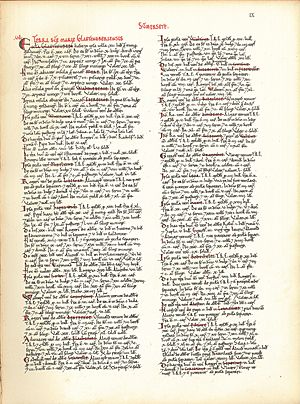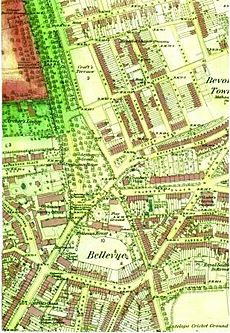Photozincography of Domesday Book facts for kids

In the 1860s, the very first exact copy, or facsimile, of the famous Domesday Book was made. This was done using a new method called photozincography, which was later just called zinco. Henry James was in charge of this big project. It happened at the Ordnance Survey offices in Southampton.
Contents
Copying the Domesday Book
Starting the Project
Henry James created the photozincography process. He met with William Ewart Gladstone, who was like the country's finance minister at the time. Sir Henry told him he could make copies of old documents very cheaply. He estimated it would cost about £1,575 to make 500 copies of the entire Domesday Book. That's about £3.3s for each copy.
To show how affordable his method was, James also gave a price for copying just one county. He used Cornwall as an example, since it was a shorter section. He thought 500 copies of Cornwall would cost only £11. 2s. 4d. This made Cornwall the first part of the Domesday Book to be copied using his new method.
On January 24, 1861, Sir Henry got permission to copy the Cornwall section. This was a test funded by the government. Joseph Burtt, who worked with old records, helped prepare the book. On February 4, 1861, Burtt carefully took the Domesday Book to Southampton by train.
The Domesday Book Travels
When Burtt arrived at the Ordnance Survey offices in Southampton, he was very happy. He noted that the buildings were "fireproof" and had a "military guard." He was given the best room for the Domesday Book. The book was kept in a fireproof safe, and Burtt held the key.
Burtt watched the photozincography process closely. Henry James insisted that all the copies be developed and printed before the original pages were returned. The copying of Cornwall was finished in just 11 days. After that, Burtt returned to London with the Domesday Book. This work was done in the Ordnance Survey photography building, which people called the "glasshouse."
Getting Permission and Challenges
After finishing Cornwall, James asked for permission to copy the rest of the Domesday Book. He believed that selling the bound copies could pay for the whole project. However, the government wanted to compare James's method with another one. This other method was used by Reverend Lambert Larking of Kent.
A Rival Method
Larking, who studied old things, had hired an artist to copy the county of Kent. He used a method called lithography, which was much more expensive than photozincography. To get permission over Larking's method, James had to prove that people were interested. He also had to guarantee low costs.
Thomas Letts of Letts Son & Co. Limited helped James. They sent out a notice across the country, asking people to sign up for copies. By late October, more than 50 people had signed up for each county. On November 28, 1861, Burtt went back to Southampton with the Domesday Book. By December, James had permission to copy most of the Great Domesday Book. But he was specifically told not to copy Kent, to protect Larking's project.
By 1864, the exact copy of the entire Great Domesday Book was finished. It was published in 32 county volumes. This included Kent, because Larking allowed James to finish it before he passed away. The copies were printed in two colors, red and black, just like the original old book.
The Copies Today
Even today, the books printed by Henry James's method are still valued. They might not be as perfect as later copies, but his edition of the Domesday Book is still the only complete copy available. You can often find these copies for a reasonable price.
See also


